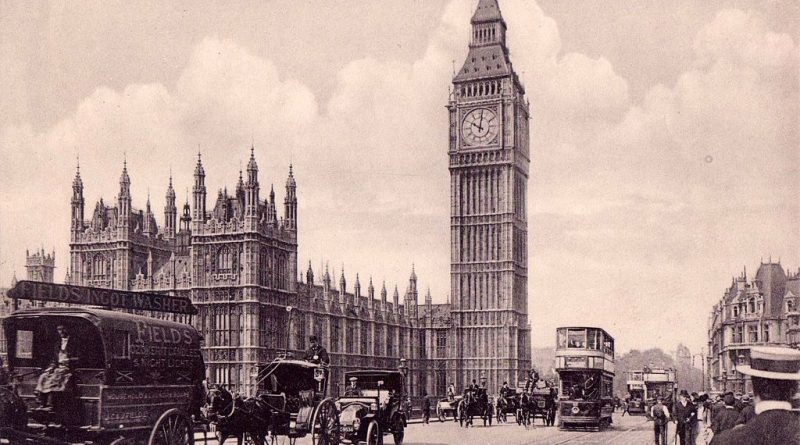Hal Miller – 1978 Speech on Redditch Casualty Service
Below is the text of the speech made by Hal Miller, the then Conservative MP for Bromsgrove and Redditch, in the House of Commons on 3 November 1978.
On Thursday, 30th May 1895, as reported in the Redditch Indicator, one Thomas Woodward, agricultural labourer, of Red Lion Street, Redditch was admitted as the first patient to the recently opened Smallwood Hospital, Redditch. I assure the Under-Secretary of State for Health and Social Security, for whose presence I am grateful, that I do not intend to set out the whole history of the difficulties besetting the provision of a casualty service in Redditch since that date. But it is significant that the first patient admitted was a casualty patient, there having previously been some argument as to whether a hospital was needed there for that purpose.
The Minister may be familiar with the argument about whether a new district general hospital was required in my constituency at all, an argument happily concluded. But the hon. Gentleman will not be surprised to learn that even with the construction of the Smallwood hospital there was an argument for about three years over the choice of the site, and there was some delay in the construction. All that my constituents are hoping is that the new hospital will be open well before the centenary of the Smallwood hospital.
My intention in raising the matter this afternoon is by no means to conduct a witch-hunt of any kind. I pay tribute to the courtesy and attention with which I have been received by the Minister of State on several occasions—regrettably several occasions—on this most difficult matter.
The truth is that we are confronted with a log jam. My purpose in raising the matter this afternoon is to seek the Minister’s assistance in attempting to break it. I hope that he will understand me when I say that it is also my intention to try to head off the possibility of a witch-hunt being conducted locally, in the press and by other means, against those who are imagined to be responsible for the difficulties affecting the provision of the casualty service. Such a public witch-hunt could only do serious damage to the morale of those who are continuing to provide the greatly reduced service and could well result in the complete withdrawal of the service.
I hope that the Minister understands that that is a real possibility. I am a member of an action committee which I have been trying to head off from that very course, but I regret that it is one that it may determine to pursue.
I spoke of a log jam and referred to several visits to the Department. I think that I should proceed to discuss the need for the casualty service before going on to list the various elements in the situation as I see them.
The new town of Redditch now has a population of about 60,000. According to the statistics handed to me last week by the local employment office, there is a workforce of 33,000, practically all in manufacturing industry. The casualty service does not just provide for the growing new town of Redditch. It also provides for the surrounding areas. That has been recognised in the calculation of the population of the catchment area for the new district general hospital.
The population of the area currently served by the Redditch casualty service, restricted as it unfortunately is, is about 90,000 and is increasing as the new town moves towards fulfilment in 1981. During the discussions we have had on several occasions with the Department, mention has been made of the need for this service. The Under-Secretary referred to this in his letter to me of 19th August 1977. The area health authority was asked to undertake a survey at that time. A year later an interim survey was produced. We still do not have the results of any final survey, despite the lapse of time since the Under-Secretary was good enough to write to me.
It can be said that the figure for the number of casualties from Redditch attending the Selly Oak hospital out of normal working hours, which are the only hours during which the Redditch service is provided—this can therefore be taken as a fair indicator of the increase in demand and consequently of the need— have risen from 13 per month in 1976 to 145 per month last year. More up-to-date figures are not available. A further illustration can be obtained by the fact that on a recent Saturday afternoon at the Bromsgrove cottage hospital there were 37 patients from Redditch in attendance.
There is also a query about the extent of the treatment accorded to these casualties from Redditch at Selly Oak hospital. The question that arises is whether they are given full treatment or some first aid attention and then referred to the Redditch hospital during working hours on Monday for a full and proper examination. I am not qualified to speculate on that but I would point out that it is not unknown for there to be 110 cases awaiting the magic hour of 9 o’clock on Monday morning in Redditch. To the bulk of the 90,000 population the need for this service is totally apparent. People cannot understand why the service cannot be provided on a more satisfactory, that is continuous, basis.
We must bear in mind that there is in Redditch a history of 24-hour provision of casualty service. Smallwood hospital is equipped not only with radiography but with an operating theatre. The staff at that hospital took a great and justifiable pride in the service they provided for their fellow citizens. It will readily be understood what a serious effect there was upon morale when the hours of operation of the casualty service were reduced to the normal working hours of 9 am to 5 pm, Monday to Friday.
This reduction in service took place in April 1977. Previous warning had been given—very nearly a year’s warning—that the service would be reduced unless something could be done. Indeed, resignations from the general practitioners providing the service were finally handed in in October 1976, although they continued to provide the full service until April 1977.
During that period of warning notice, there had been attempts to try to resolve the situation. The suggestion was made that the practitioners providing the service might qualify for the newly-constituted grade the previous year—1975— of hospital practitioner. This was found to be out of order on what appears to the layman to be the technicality that a consultant was not in overall charge. I say that it appears to be a technicality to the layman because consultants do provide a specialist consultant service on a sessional basis at the hospital. It may be that there is some professional objection at the bottom of this situation.
It is not as if there has been adequate primary care available in the new town of Redditch. We need only to look at the new estate of Church Hill, with a population of 8,000 out of the 16,000 to be achieved in two years time, where there is at the moment a doctor operating from a semi-detached house. It is hoped to provide some portakabins next spring, but heavens knows what happens to people who get ill this winter.
Adequate primary care is not available in this new town. I have raised this matter before in the House. I did so with the present Foreign Secretary when he was at the Department of Health and Social Security. There has been no provision in new towns for expenditure on health concomitant with the growth of new towns in the same way as has been provided for roads and education. This is a very serious matter.
I turn now to the possible elements in the log jam. I have hinted that there may be some professional difficulties over the qualifications of these doctors. There may, indeed, be further professional difficulties or disagreements as to the provision of the casualty service and the priority it should be accorded in the expenditure of public funds.
Whereas, for example, the medical staff committee in Redditch is quite convinced of the need for 24-hour coverage, and has accepted that, as a stage towards that, extension of the hours of the provisions of the casualty service might be a logical next move, expressing its willingness to do so if the necessary arrangements could be made, the district medical team, advising, apparently, the area health authority, did not share that opinion.
There are administrative elements in the log jam. I will spare the Minister’s blushes about the effects on pay policy on the situation. That was one of the stumbling blocks to an earlier proposal during the period of notice in 1976. But it appears that there may well still be administrative difficulties. The Minister of State at one stage told me that a working party was to be set up with the Department of the Environment to examine new towns and the provision of medical facilities. That would appear to have made no progress. There has been, apparently, some administrative difficulty in the AHA concluding its survey, which has now taken well over a year.
There may be differences of opinion between the hospital, the district and the area as to how these problems should be tackled, but the public simply cannot understand how it has proved impossible for this log jam to be resolved. With the withdrawal of the service, the increase of population and the advent of the new hospital, I should have thought it would have been perfectly possible to meet their quite legitimate aspirations and to treat this question as the special case which I believe it to be.



